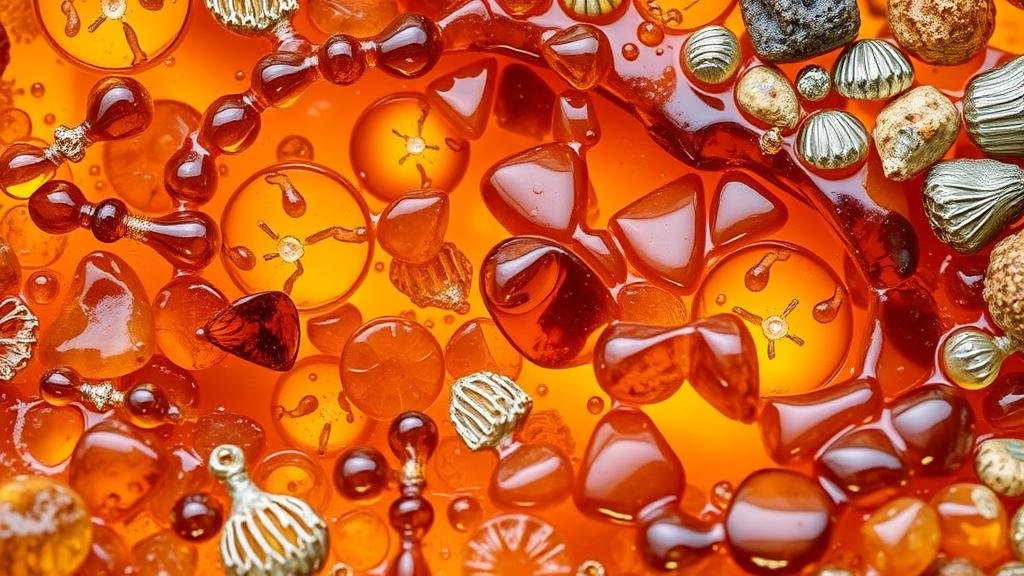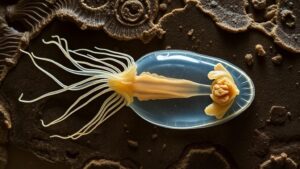Amber Mines of the Arctic: Discovering Fossils Frozen in Golden Resin
Amber Mines of the Arctic: Discovering Fossils Frozen in Golden Resin
Amber, a beautiful and fascinating substance, has captivated collectors and enthusiasts for centuries. Known for its warm golden hues and its ability to preserve ancient life forms, amber has a unique origin story centered around prehistoric forests. The Arctic regions, particularly the northern coasts of Siberia and Alaska, are emerging as significant sources of amber, offering collectors a rare opportunity to uncover fossils frozen in resin. This article explores the science, significance, and practical tips for rockhounds and mineral collectors interested in Arctic amber.
The Science Behind Amber
Amber is fossilized tree resin that has undergone polymerization over millions of years. According to the American Museum of Natural History, the process begins when trees exude resin as a defense mechanism against pathogens. Once this resin hardens and is buried under sediment, it becomes amber, sometimes preserving organic material such as insects, plant matter, and even small vertebrates within its interior. age of amber can range from 30 million to over 100 million years, depending on its geographical origin.
The amber found in the Arctic, particularly from the shores of the Lena River in Siberia, is estimated to be up to 40 million years old. This amber is primarily derived from conifer trees, specifically the species Pinus succinifera. Its chemical structure is primarily composed of carbon, hydrogen, and oxygen, making it a fascinating study subject in paleontology and geology.
Fossils in Amber: A Unique Window to the Past
One of the most remarkable aspects of amber is its ability to preserve fossils with incredible detail. In Arctic amber, researchers have found a variety of inclusions that provide a snapshot of ancient ecosystems. Notable discoveries include:
- Insects such as mosquitoes, midges, and beetles, which tell us about the diversity of ancient fauna.
- Plant material, including pollen and leaves, which offers insights into the flora that existed in polar regions.
- Small vertebrates like lizards and frogs that shed light on the evolutionary history of these species.
According to a study published in the journal Palaeontology, researchers discovered a remarkably well-preserved feather in Baltic amber, offering clues to the feather structures of ancient birds. Such finds emphasize the ecological importance of amber in understanding the Earths biological history.
The Significance of Arctic Amber for Collectors
For rockhounds and mineral collectors, Arctic amber presents both a challenge and an opportunity. rarity and historical significance of this amber can make it highly sought after. Factors influencing its value include:
- Quality: Clear amber with minimal inclusions is typically more valued than cloudy pieces.
- Inclusions: Fossils within the amber can significantly increase its value. For example, an insect inclusion can elevate a specimens price by 50% or more.
- Size and Color: Larger pieces with vibrant colors, like deep orange or dark honey, are more appealing to collectors.
Practical Tips for Collectors
For those interested in collecting Arctic amber, consider the following practical tips:
- Research Sources: Investigate reputable dealers and auctions specializing in amber. Online communities and local rock and mineral clubs can provide helpful insights.
- Learn to Identify Authenticity: Familiarize yourself with the characteristics of genuine amber, including its weight, surface texture, and color. Natural amber often has a warm, rich glow, while imitation pieces may appear overly glossy.
- Document Your Finds: Keep detailed records of where and when you acquired each piece, along with any provenance that can enhance its authenticity and value.
- Network with Other Collectors: Join forums and attend trade shows to connect with fellow collectors; sharing knowledge can enhance your appreciation of amber.
Conclusion: The Endless Fascination of Arctic Amber
The amber mines of the Arctic serve not only as a treasure trove for collectors but also as a critical resource that enhances our understanding of ancient ecosystems. As research continues to uncover new fossilized inclusions, the value and significance of Arctic amber will undoubtedly increase. Whether you are a seasoned rockhound or a novice mineral enthusiast, the allure of amber is undeniable. Start exploring, and you might just uncover a piece of history frozen in time.



